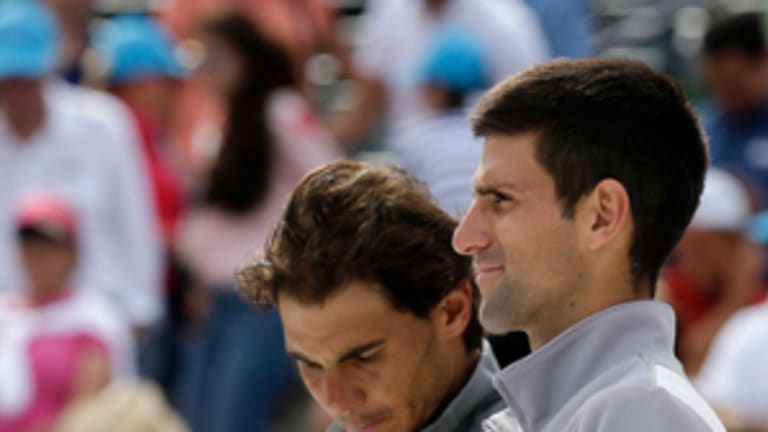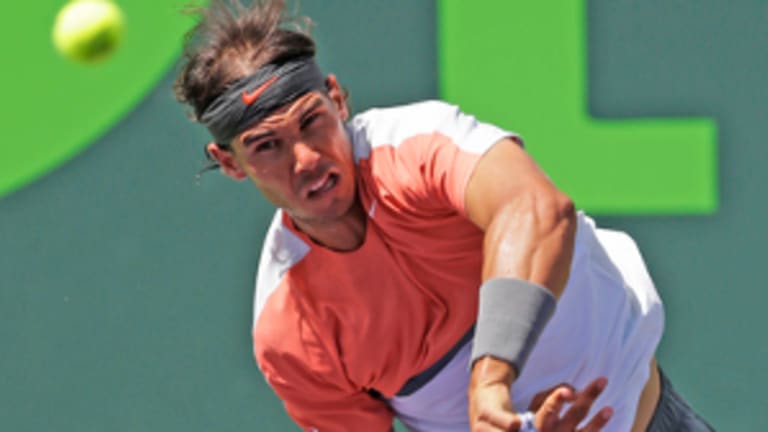MIAMI, Fla.—Sports commentary is awash in military terminology and metaphors; they’re a handy crutch for the ink-stained wretches who convey the news. But in at least one important way, certain sports—tennis up high on that list—are like war. And war and tennis almost always come down to the same thing: The battle for the control of territory.
World No. 2 Novak Djokovic won that battle today against world No. 1 Rafael Nadal in the final of the Miami Masters 1000, thanks to a stunning display of strategy backed up by devastating tactics abetted by impeccable execution. The result was a resounding re-affirmation of Djokovic’s quality as a champion and evoked echoes of his greatest year, 2011. His 6-3, 6-3 triumph earned him a place alongside Roger Federer as the only two men who have won Indian Wells and Miami back-to-back on two different occasions.
Before we go much further into this analysis, I feel obliged to issue this caveat: All the strategies and tactics ever conceived don’t amount to a hill of beans if the enemy is raining down aces and cleaning lines with his shots. This was not one of those days for Nadal. After he squandered a break point in the very first game by drilling a backhand into the net, Djokovic got his teeth into the match and never let go.
“I had the break point,” Nadal said later, identifying the scant few positives he could think of. “And I played a few games and a few points the right way, with the right intensity. But for the rest, it’s easy to analyze. The opponent was better than me. That's it.”
Djokovic was better, though, in ways that shed some light on the nature of this match-up and rivalry—now 40 matches strong—ways that will undoubtedly apply in their future meetings. Most important, today showed the advantage Djokovic has in that critical battle for territory because of his finest if not most obvious strength—the remarkable balance in his game, which at its best can take full advantage of the unbalance in Nadal’s.

